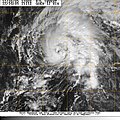Datei:Tropical Storm Zeta 2005.jpg

Größe dieser Vorschau: 600 × 600 Pixel. Weitere Auflösungen: 240 × 240 Pixel | 480 × 480 Pixel | 768 × 768 Pixel | 1.024 × 1.024 Pixel | 2.048 × 2.048 Pixel | 4.800 × 4.800 Pixel
Originaldatei (4.800 × 4.800 Pixel, Dateigröße: 4,31 MB, MIME-Typ: image/jpeg)
Dateiversionen
Klicke auf einen Zeitpunkt, um diese Version zu laden.
| Version vom | Vorschaubild | Maße | Benutzer | Kommentar | |
|---|---|---|---|---|---|
| aktuell | 16:57, 3. Aug. 2006 |  | 4.800 × 4.800 (4,31 MB) | Good kitty | |
| 06:39, 6. Jan. 2006 |  | 4.000 × 4.000 (3,12 MB) | AySz88 | Picture taken January 2, 2006 Picture from http://earthobservatory.nasa.gov/NaturalHazards/natural_hazards_v2.php3?img_id=13297 | |
| 01:31, 31. Dez. 2005 |  | 1.024 × 1.024 (239 KB) | AySz88 | This image should be replaced by other, better images later. From The Naval Research Lab, http://www.nrlmry.navy.mil/tc-bin/tc_home2.cgi?&ACTIVES=05-ATL-30L.ZETA,05-SHEM-91S.INVEST&STORM=05-ATL-30L.ZETA&ATCF_BASIN=al&PHOT=yes&AGE=Prev&BASIN=ATL&STORM_NAM |
Dateiverwendung
Die folgenden 2 Seiten verwenden diese Datei:
Globale Dateiverwendung
Die nachfolgenden anderen Wikis verwenden diese Datei:
- Verwendung auf en.wikipedia.org
- Wikipedia:Selected anniversaries/December 30
- Portal:Tropical cyclones/Anniversaries/January
- Portal:Tropical cyclones/Anniversaries/January/6
- Portal:Tropical cyclones/Selected image/26
- Portal:Tropical cyclones/Featured article/Tropical Storm Zeta (2005)
- Tropical cyclones in 2005
- User:LightandDark2000/My Notable Storms
- User:40bus/sandbox1
- Portal:Tropical cyclones/Selected image
- Wikipedia:In the news/Posted/January 2006
- Verwendung auf eo.wikipedia.org
- Verwendung auf es.wikipedia.org
- Verwendung auf eu.wikipedia.org
- Verwendung auf pt.wikipedia.org
- Verwendung auf simple.wikipedia.org
- Verwendung auf zh.wikipedia.org

